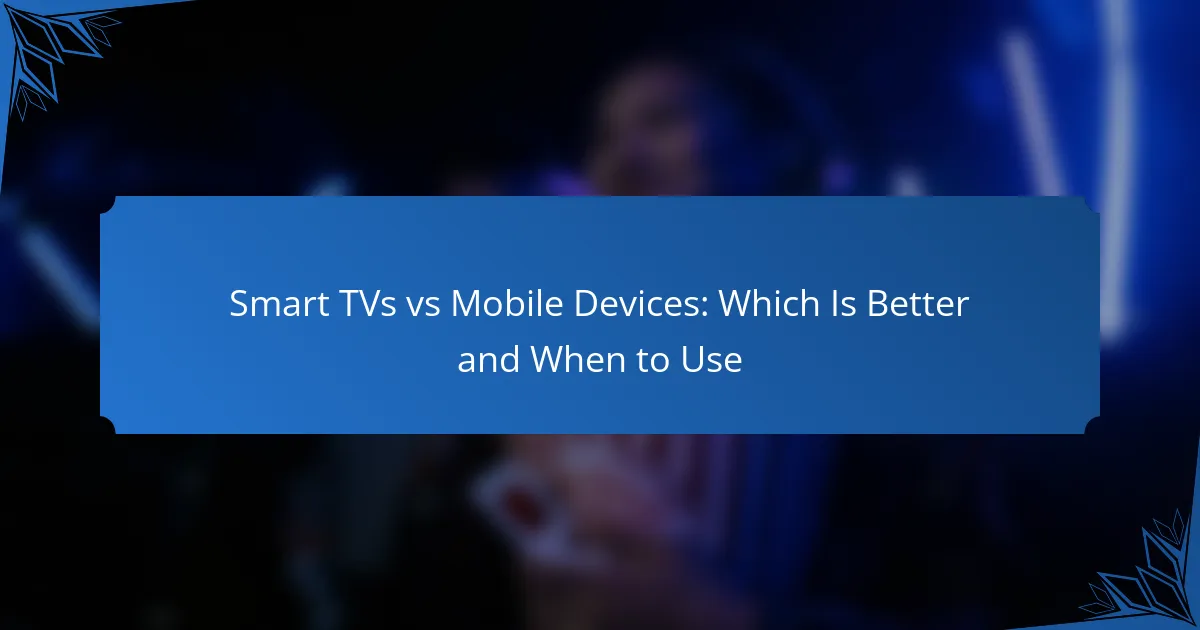In 2023, the best streaming devices combine performance, features, and value to enhance your viewing experience. Options like Roku, Amazon, Apple, Google, and Android TV cater to diverse preferences, each offering unique benefits in streaming quality and content access. When selecting a device, it’s essential to consider factors such as resolution support, service compatibility, and user interface to ensure optimal satisfaction.
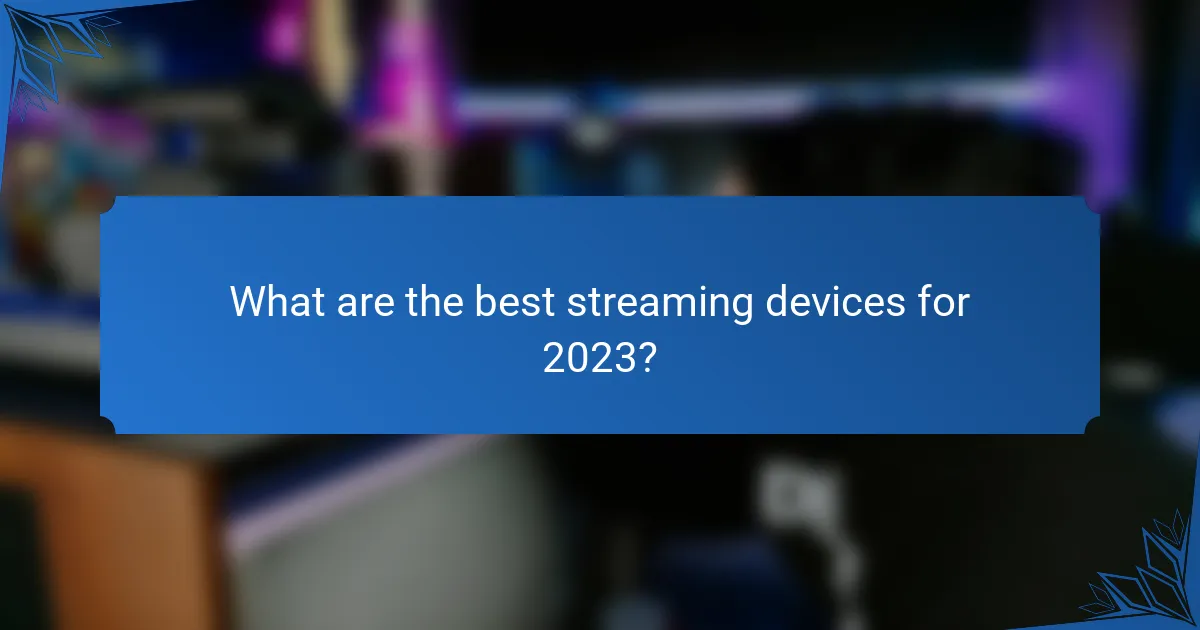
What are the best streaming devices for 2023?
The best streaming devices for 2023 offer a combination of performance, features, and value, catering to various user preferences. Key options include Roku, Amazon, Apple, Google, and Android TV devices, each providing unique advantages in streaming quality and content accessibility.
Roku Streaming Stick 4K
The Roku Streaming Stick 4K is known for its user-friendly interface and extensive channel selection. It supports 4K HDR streaming, providing vibrant visuals for compatible content, and offers voice control through its remote.
Consider its affordability, as it typically retails around $50 USD, making it a great entry point for those new to streaming. Additionally, Roku’s platform is compatible with various streaming services, ensuring a wide range of viewing options.
Amazon Fire TV Stick 4K
The Amazon Fire TV Stick 4K stands out with its integration of Alexa for voice commands and smart home control. It supports 4K Ultra HD and Dolby Vision, enhancing the viewing experience with high-quality visuals and sound.
Priced similarly to the Roku at about $50 USD, it also offers access to a vast library of apps and channels, including Amazon Prime Video. Users should note that it may prioritize Amazon services, which could affect content discovery.
Apple TV 4K
The Apple TV 4K is a premium streaming device that excels in ecosystem integration, especially for Apple users. It supports 4K HDR and Dolby Atmos, providing an immersive viewing experience.
With a price point around $180 USD, it is more expensive than other options but offers features like AirPlay and access to Apple Arcade. Consider this device if you are already invested in the Apple ecosystem and value seamless connectivity across devices.
Google Chromecast with Google TV
The Google Chromecast with Google TV combines casting capabilities with a dedicated interface, allowing users to browse content easily. It supports 4K HDR streaming and offers personalized recommendations based on viewing habits.
Typically priced around $50 USD, it is a versatile option for those who enjoy casting from their mobile devices. However, users should be aware that it may require a bit of setup to fully utilize its features.
Android TV Box
Android TV Boxes provide a customizable streaming experience, allowing users to install various apps and services. They support 4K streaming and often come with Google Assistant for voice control.
Prices vary widely, generally ranging from $50 to $150 USD, depending on the brand and features. This option is ideal for tech-savvy users who want flexibility in their streaming setup and access to a wide range of apps beyond traditional streaming services.
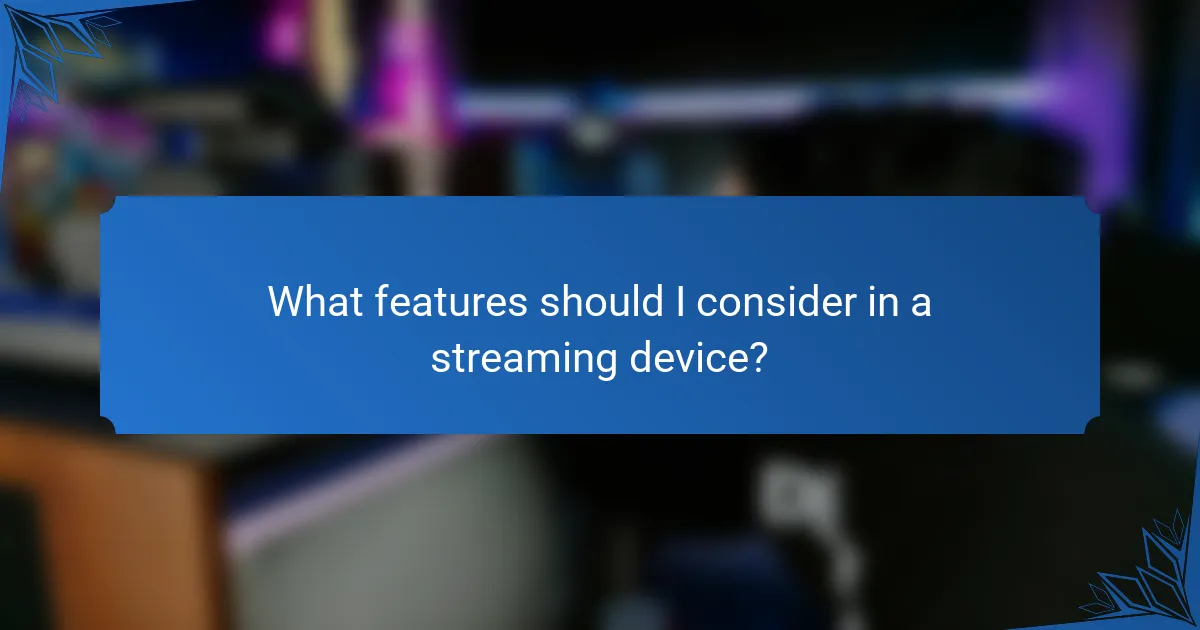
What features should I consider in a streaming device?
When choosing a streaming device, consider features like resolution support, compatibility with streaming services, user interface quality, and remote control functionality. These elements significantly impact your viewing experience and overall satisfaction with the device.
Resolution support
Resolution support is crucial for enjoying high-quality video content. Look for devices that support at least 1080p (Full HD) resolution, with many now offering 4K Ultra HD for sharper images and better detail. If you have a 4K television, ensure your device can deliver that resolution for optimal viewing.
Additionally, consider HDR (High Dynamic Range) support, which enhances color and contrast for a more vibrant picture. Devices that support HDR10 or Dolby Vision provide a superior visual experience, making them worth considering if you prioritize picture quality.
Streaming service compatibility
Compatibility with popular streaming services is essential for accessing your favorite content. Ensure the device supports major platforms like Netflix, Hulu, Amazon Prime Video, and Disney+. Some devices may also offer exclusive content or features for specific services, which can enhance your viewing options.
Check for any regional restrictions on services, as some devices may not support certain platforms in specific countries. This is particularly relevant for users in Europe or Asia, where service availability can vary significantly.
User interface quality
A user-friendly interface can greatly enhance your streaming experience. Look for devices that offer intuitive navigation, easy access to apps, and customizable home screens. A well-designed interface minimizes frustration and allows for quicker access to your favorite shows and movies.
Consider reading user reviews to gauge the interface quality of different devices. Some may have smoother performance and faster load times, which can significantly impact how enjoyable the device is to use.
Remote control functionality
The remote control’s design and functionality can affect how easily you interact with your streaming device. Look for remotes that are ergonomic, have well-placed buttons, and possibly include voice control features for hands-free operation. Some devices even offer mobile app controls, which can be a convenient alternative.
Be aware of the battery life of the remote and whether it supports features like backlighting for use in low-light conditions. A good remote can enhance your overall experience, making it easier to navigate through content seamlessly.
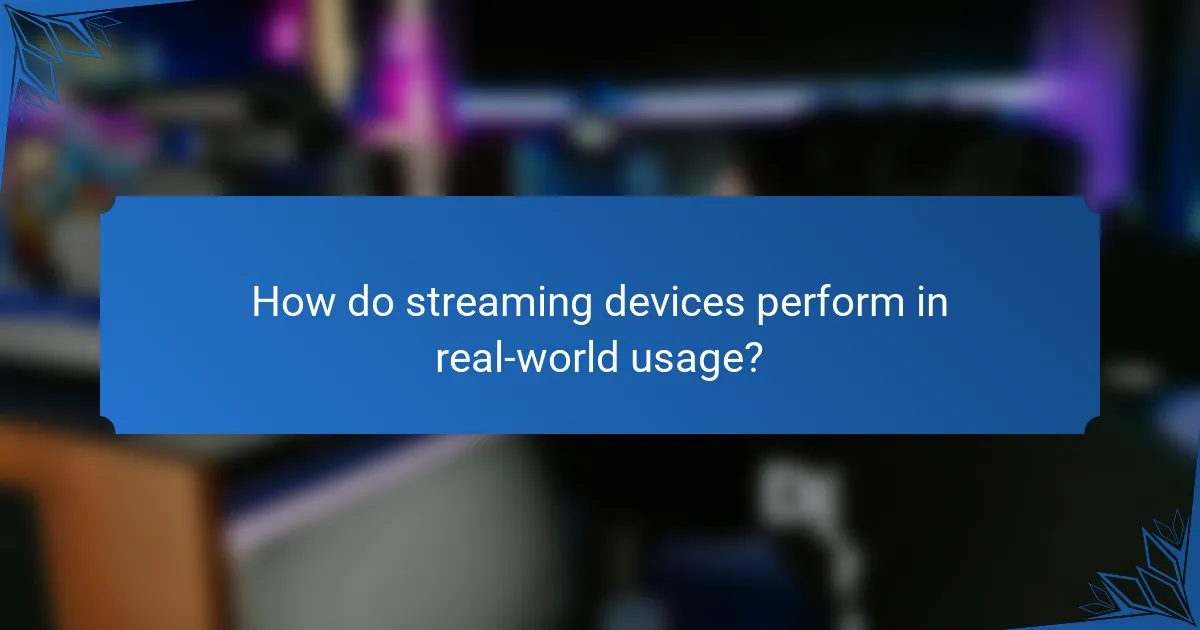
How do streaming devices perform in real-world usage?
Streaming devices typically deliver reliable performance, but real-world usage can vary based on several factors including internet speed, device specifications, and app optimization. Users often experience differences in loading times, video quality, and app performance that can significantly affect their viewing experience.
Loading times
Loading times are crucial for a smooth streaming experience. Most devices should load content within a few seconds, but this can be affected by your internet connection speed and the device’s processing power. Generally, a stable broadband connection of at least 25 Mbps is recommended for high-definition streaming without delays.
To minimize loading times, consider using devices with faster processors and ensuring your Wi-Fi signal is strong. Avoiding peak usage times can also help reduce buffering.
Video quality
Video quality varies significantly among streaming devices, with many supporting resolutions from standard definition (SD) to 4K Ultra HD. Devices that support 4K typically require a higher bandwidth, often around 25 Mbps, to deliver a seamless experience without interruptions.
When choosing a device, check for support of HDR (High Dynamic Range) formats, which enhance color and contrast. Additionally, ensure your TV is compatible with the device’s output for optimal viewing.
App performance
App performance can differ widely based on the device’s operating system and hardware capabilities. Some devices may struggle with app loading times or experience crashes, especially with resource-intensive applications. It’s advisable to choose devices known for their robust app ecosystems and regular updates.
To enhance app performance, regularly update your device’s firmware and apps. Clearing cache and uninstalling unused applications can also improve overall responsiveness and speed.
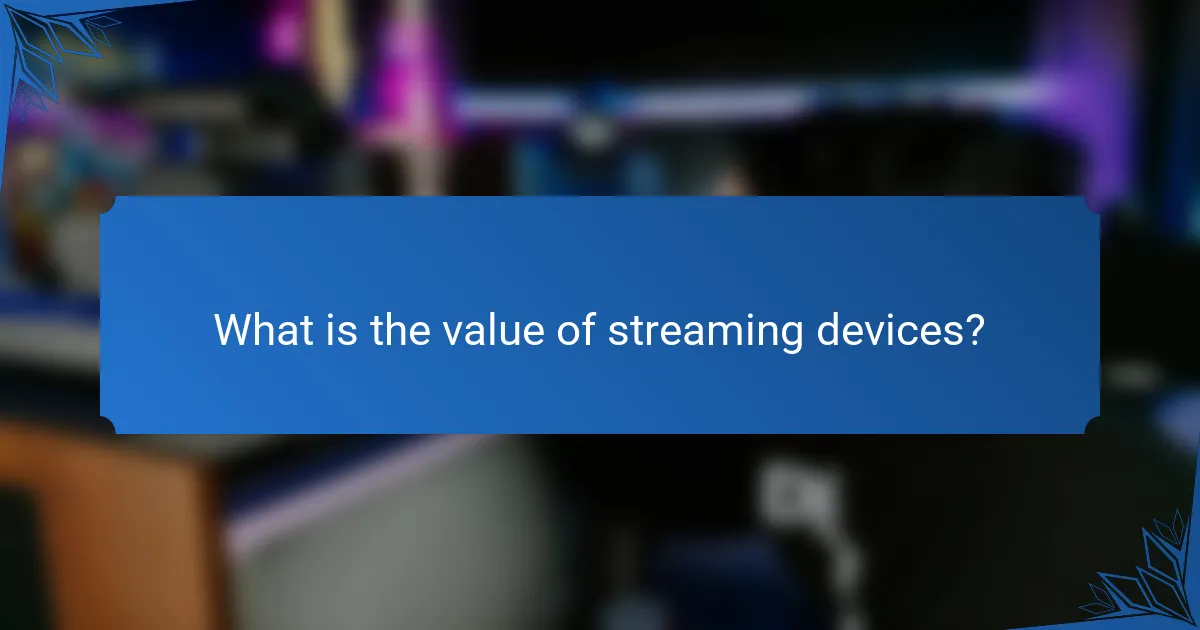
What is the value of streaming devices?
Streaming devices provide a convenient way to access a variety of entertainment options, often at a lower cost than traditional cable subscriptions. They allow users to stream content from platforms like Netflix, Hulu, and Amazon Prime directly to their TVs, enhancing viewing experiences with features like high-definition video and user-friendly interfaces.
Price comparison
The price of streaming devices can vary significantly, typically ranging from around $30 to $200. Budget options like the Roku Express or Amazon Fire Stick offer essential features at lower prices, while premium devices like the Apple TV provide advanced functionalities and higher build quality.
When comparing prices, consider not just the initial cost but also the features offered. Some devices may include additional services or capabilities, such as voice control or gaming options, which can justify a higher price tag.
Subscription costs
Subscription costs for streaming services can add up, with popular platforms charging between $5 to $15 per month. For example, Netflix offers various plans starting at around $10, while Disney+ is priced at approximately $8 per month.
It’s essential to evaluate which services you actually need. Bundling subscriptions or opting for ad-supported versions can help reduce overall expenses. Keep an eye on promotional offers that may provide discounts for new users.
Long-term savings
Investing in streaming devices can lead to long-term savings compared to traditional cable services, which often exceed $100 per month. By switching to streaming, users can save hundreds of dollars annually, especially if they choose services that fit their viewing habits.
To maximize savings, regularly assess your subscription needs and eliminate services that are underused. Additionally, consider sharing subscriptions with family or friends to further reduce costs while enjoying a wider range of content.



